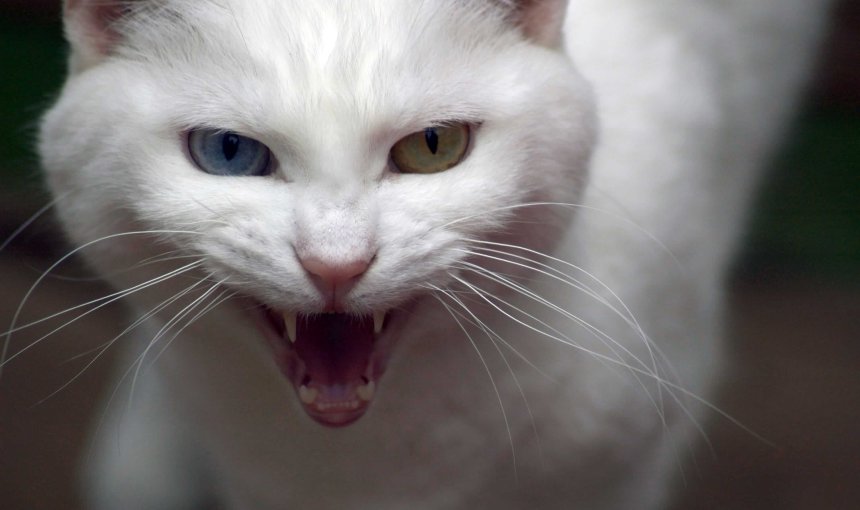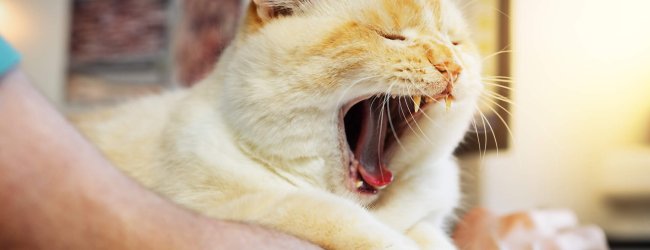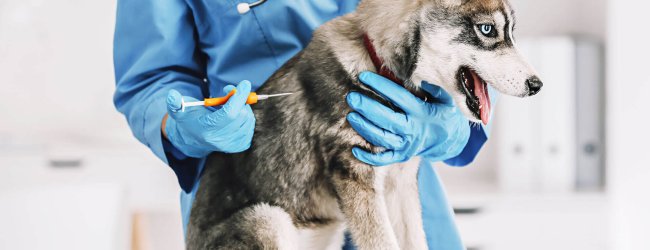How To Deal With An Aggressive Cat
All you need to know about cat aggression!

Aggressive cats are sometimes taken less seriously than aggressive dogs (maybe because cats are smaller) and it’s unusual that people seek professional help because of an aggressive cat. However, aggression in cats is not uncommon and it can be a serious problem if you don’t take action. Here’s a few things to be aware of!
Aggression in cats can vary and can develop from
- fear
- a health condition
- genetic predisposition
- environmental changes or
- predatory behavior (which requires separate treatment because it is so strong in cats).
An overaggressive behavior can make a cat difficult to live with and, as a cat owner, it is important to be aware of the aggressive signs and understand what cats are communicating through their body language.
Signs and body language of an aggressive cat
Many aggressive signs are accompanied by a fearful body posture and facial expressions. Some common signs of aggression and fear include:
- Staring
- Stalking
- Hissing
- Pouncing
- Showing teeth
- Arched back
- Tail straight up
- Ears pulled back
- Dilated pupils
- Raised hair on the back
- Attacking with claws and teeth
- Attacking another animal around the neck
- Marking a territory by chin-rubbing or spraying
It is very important that you always pay attention to your cat’s body language, especially if you have a child in the house. An aggressive cat can be very dangerous toward children who may not be able to recognize the physical cues that are the warning signs of aggression. Additionally, cat bites and scratches are painful and can transmit disease.
Causes of cat aggression
The different types of aggression are not mutually exclusive and your cat may show more than one type of aggression. These are some of the most common aggressions.
- Eye to Eye contact can ignite cat aggression. Cats see eye contact as a sign of aggression. Two cats can play happily together then a glance in each other’s eyes can cause a fight. This will often end with the submissive cat running away from the situation but this aggression was caused due to eye to eye contact.
- Cats can show signs of aggression when in pain. If you try to pick up a cat and they bite this can be a sign of a problem. If your cat is acting unusually aggressive or dominant this maybe your cat trying to cover up a medical problem.
- Cats can show signs of aggression when they are suffering mental trauma. This could be an incident that has happened that you do not know about.
- Cats can show aggression while playing with life like toys. This is quite natural and simulates natural characteristics in the wild.
- Territorial aggression. Many types of animals strive to keep out other individuals from their territory, and cats are no exception. Cats are actually one of the most territorial of animals, sometimes even more so then dogs. No matter if they are indoor or outdoor, cats will be territorial. Territorial aggression normally starts when a cat reaches adult hood (1-2 years of age) but can also be present in kittens. Should they see another cat, dog, bird or other animal in their territory they can become upset. In these situations your feline friend may transfer his aggression out on you or other pets.
Best tips how to handle an aggressive cat
Some types of aggression are caused by environmental or territorial issues, but because aggression may be caused by a medical problem, you should always take your cat to the vet, who will perform a physical examination.
A medical workup is essential for all aggressive cats. Some cats behave aggressively because of a medical condition or complication. Certain medications can alter mood and affect your cat’s susceptibility to aggression. Even diet has been implicated as a potential contributing factor as some commercial foods have cerials and grains that in rare incidences can cause different behaviour problems in the cat. If a medical problem is detected, it’s important to work closely with a professional to give your cat the best chance at improving.
Do you have any experience with an aggressive cat? Please share your story or good advice.



